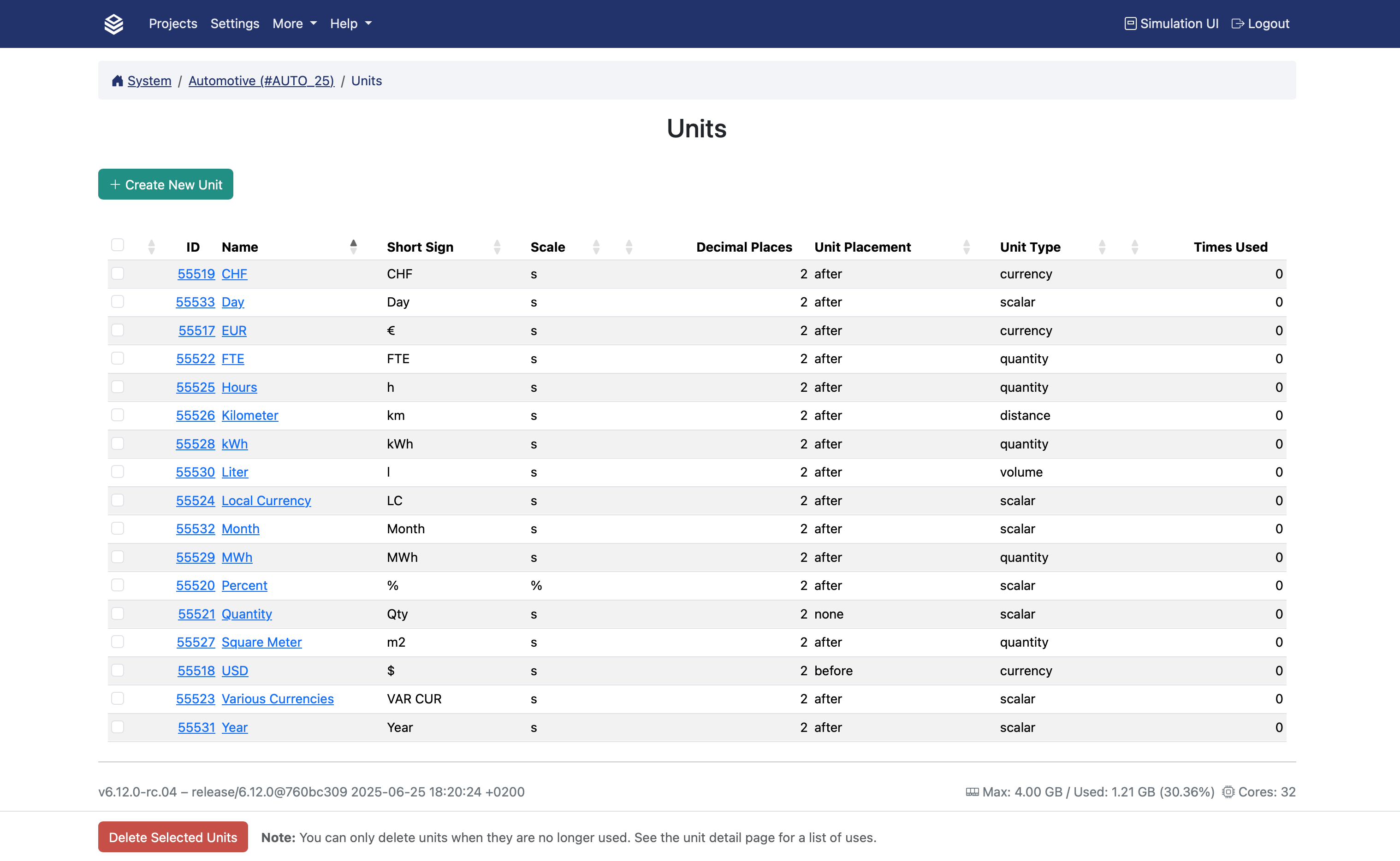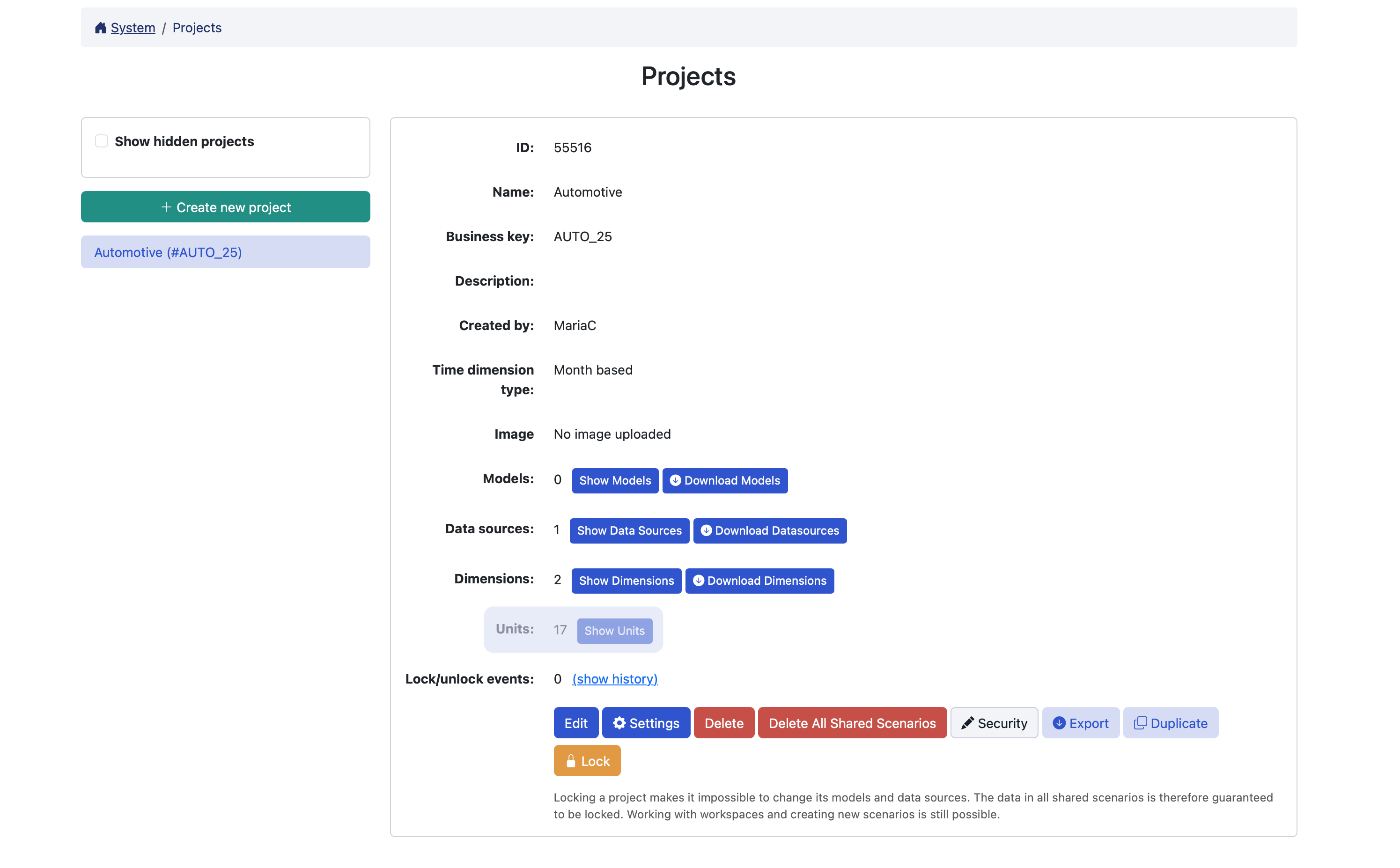Configure Units
Working with Project-Specific Units
As of 6.12.0, units—such as percentages, currencies, or custom-defined scales—are scoped at the project level. This design ensures that each project contains only the units it actually uses, improving performance, clarity, and maintainability across your modelling environment.
The following default units will automatically be included in every new project:

Managing Units
Creating and Editing Units
Each unit is tied to a specific project. You only see and manage units relevant to the project you’re currently working in. This keeps the modelling environment focused and avoids accidental reuse of irrelevant or outdated units.
Units can be created and edited directly within a project
The Units page is available within the Admin UI for each project, or in the project settings under “Configure Units”
Project administrators with a modeling license have the permissions to manage units.
Units should be clearly named to ensure consistency, especially when working across multiple projects.

Detailed configuration options
Config entry | Details |
|---|---|
Name | The name of the unit as shown in the inspector and dropdowns. |
Short sign | The symbol of the unit as shown in tables and charts. |
Unit Placement | Show the symbol before or after the value ($10 vs 10€). A 'none' placement will omit the symbol if possible (useful for FTEs and other quantities). |
Scale | The default scale for the unit. E.g. 12345678€ with a scale of 'm' (Million) will show up as 12.345678 m€ in charts and tables.
This setting can be overwritten by the scale set in the node, chart or table. |
Decimal Places | The default number of decimal places for this unit. E.g. 1.23456€ with 2 decimal places will show up as 1.23€ in charts and tables. This setting can be overwritten by the decimal places set in the node, chart or table. |
Unit Type | Assign units to a unit type. If in doubt, use scalar. Valsight bases validations and checks on this unit type, e.g. by checking that different unit types are not used in additions without conversions. |
Copying and Pasting Across Projects
When you copy nodes from one project to another:
Valsight matches units by name.
If a unit with the same name exists in the target project, it is reused.
If the unit does not exist, it is automatically created in the target project.
This ensures a smooth workflow when sharing or duplicating model components.
Best Practices
Use consistent naming conventions for units to support reuse across projects.
Regularly review your project’s unit list to remove unused entries.
When building shared components (e.g., templates), ensure unit definitions are aligned across projects.


